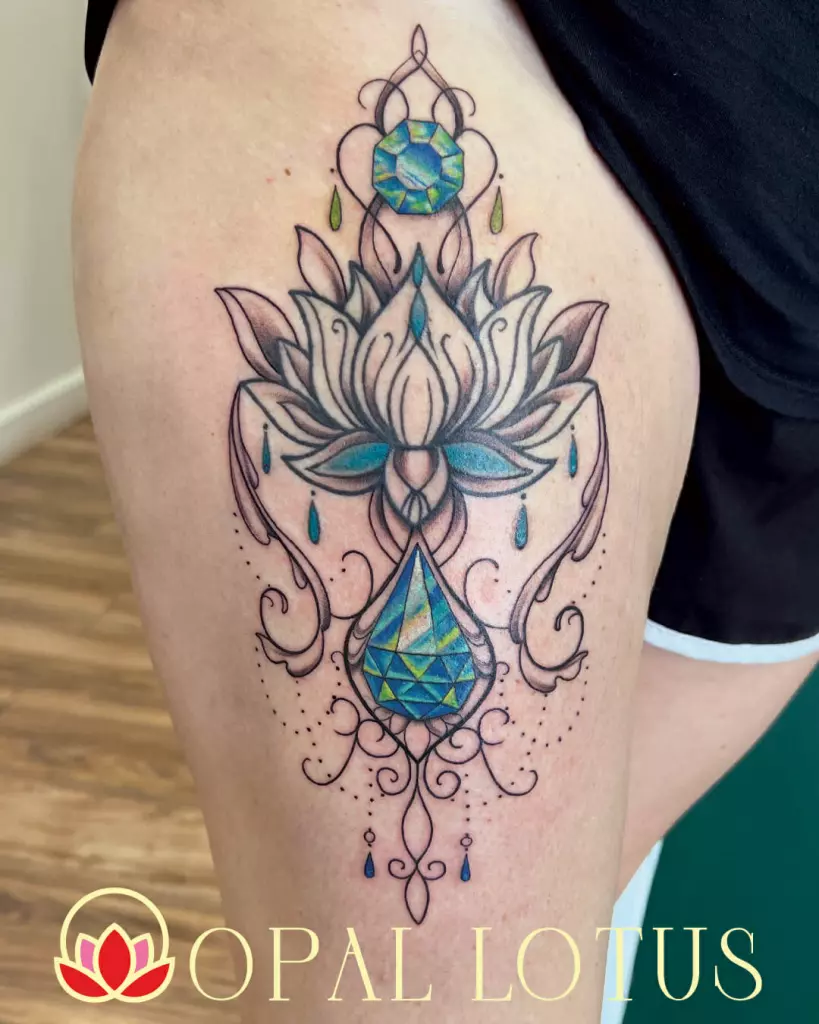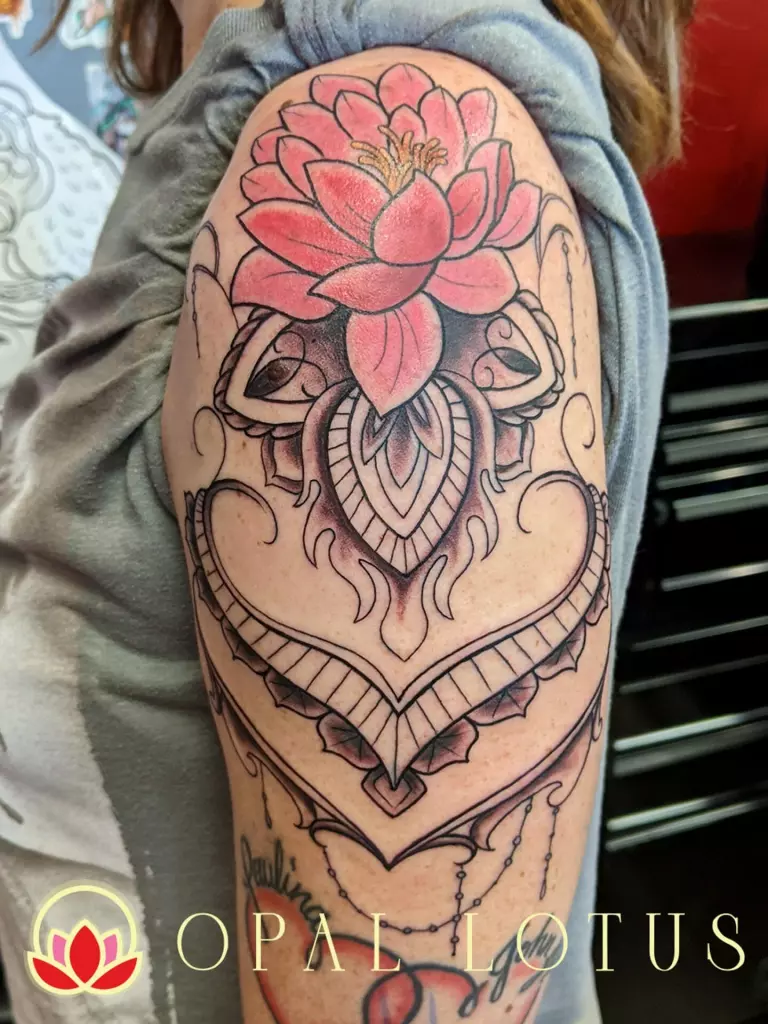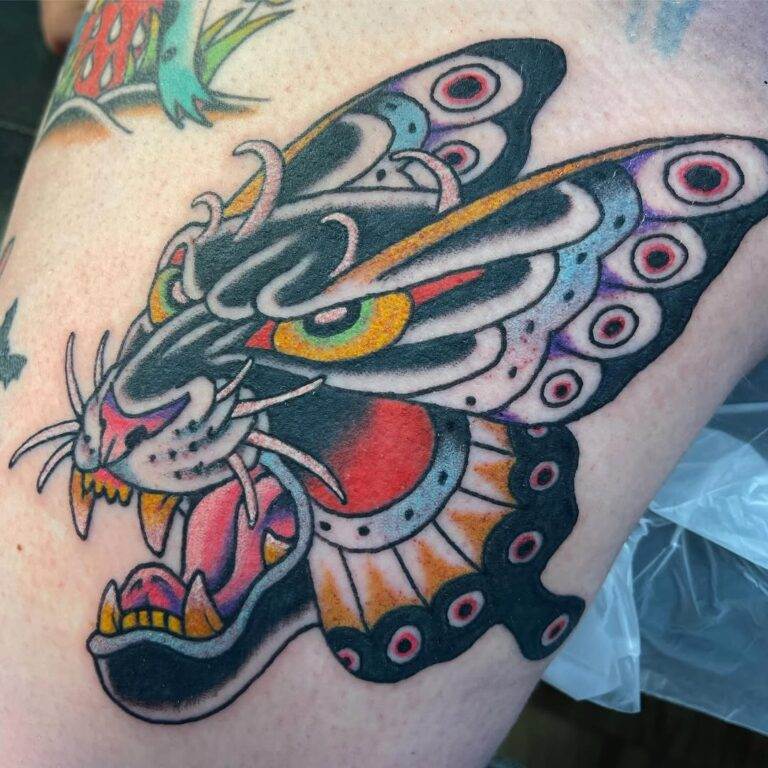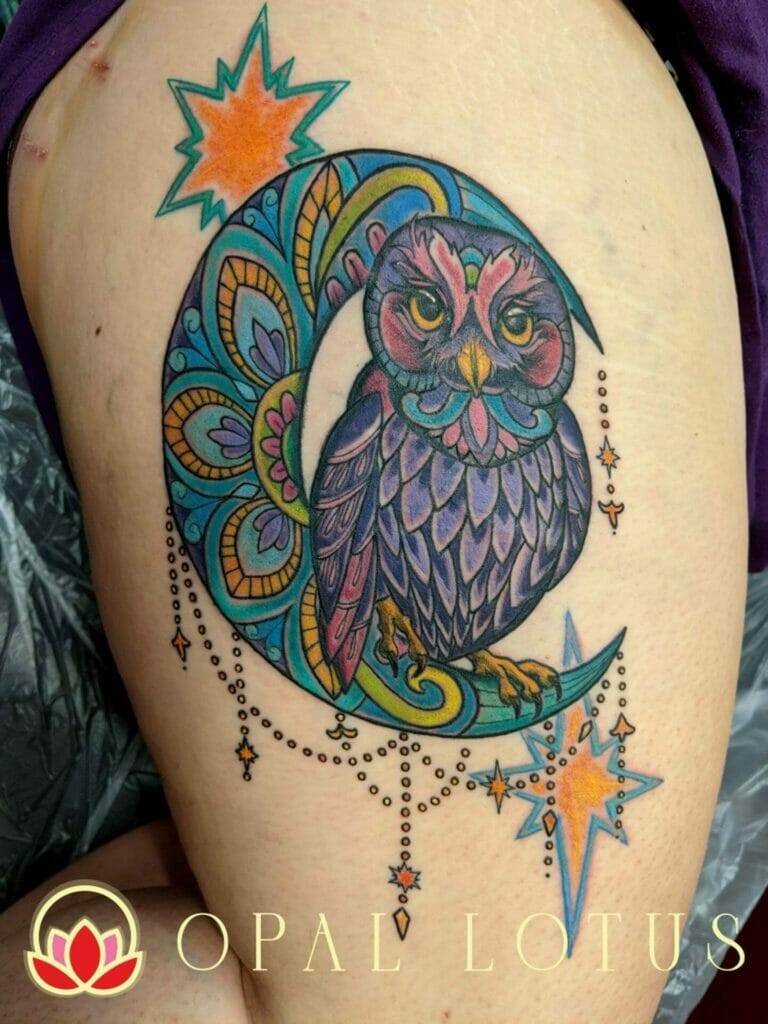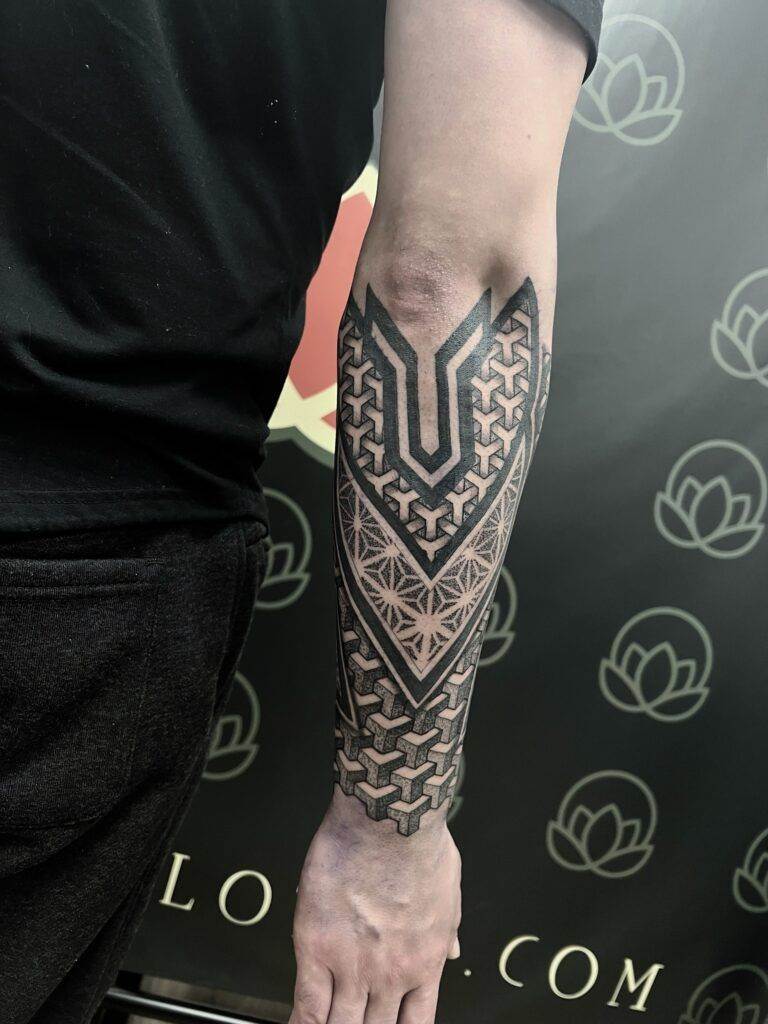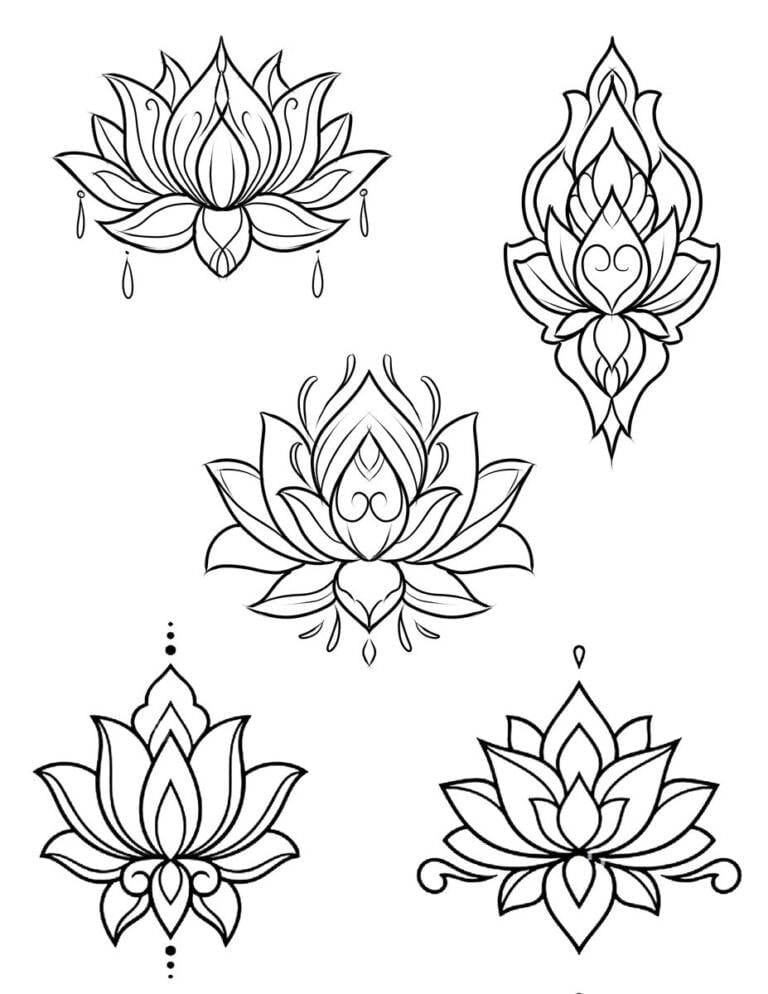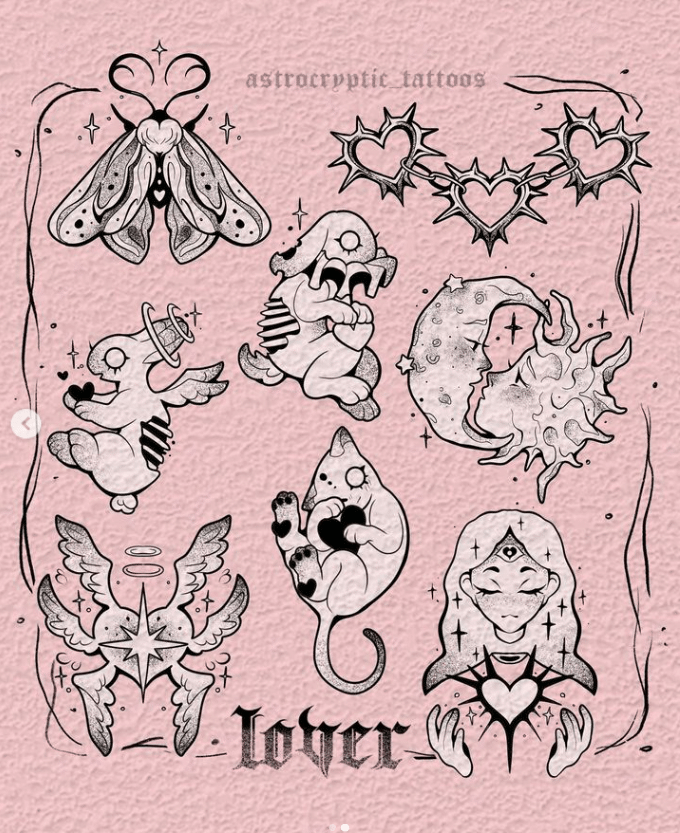Geometric tattoos have become increasingly popular in recent years, and nowhere is this more evident than in Houston’s Medical Center Area. This bustling neighborhood is home to some of the best hospitals and medical facilities in the country, attracting a diverse population of doctors, nurses, and medical professionals. It is within this community that geometric tattoos have found a special place, with their clean lines and intricate patterns resonating with the precision and attention to detail that is valued in the medical field.
The History and Significance of Geometric Tattoos
Geometric tattoos have a long history that dates back thousands of years. The origins of these tattoos can be traced back to ancient civilizations such as the Egyptians, Greeks, and Mayans, who used geometric patterns to adorn their bodies. These tattoos were often seen as symbols of protection, spirituality, and identity.
In addition to their historical significance, geometric tattoos also hold cultural significance in various societies around the world. For example, in Polynesian culture, geometric tattoos known as “tatau” are seen as a rite of passage and a way to connect with one’s ancestors. In Native American culture, geometric tattoos are used to represent different tribes and their spiritual beliefs.
The symbolism behind geometric tattoo designs is vast and varied. Different shapes and patterns can convey different meanings, such as strength, balance, unity, or protection. The clean lines and precise angles of geometric tattoos also represent order and symmetry, which can be seen as a reflection of the natural world.
The Rise of Geometric Tattoos in Houston’s Medical Center Area
The popularity of geometric tattoos in Houston’s Medical Center Area can be attributed to several factors. Firstly, the clean lines and precise angles of geometric tattoos resonate with the precision and attention to detail that is valued in the medical field. Doctors, nurses, and medical professionals often have a keen eye for detail, and geometric tattoos allow them to express this aspect of their personality.
Secondly, the diverse population in the Medical Center Area creates a melting pot of cultures and influences. Geometric tattoos have a rich cultural history, and individuals from different backgrounds may choose to get these tattoos as a way to connect with their heritage or express their individuality.
Examples of popular geometric tattoo designs in the area include mandalas, sacred geometry, and minimalist designs. Mandalas are intricate geometric patterns that are often used in meditation and spiritual practices. Sacred geometry refers to the study of geometric patterns that are found in nature and are believed to hold spiritual significance. Minimalist designs, on the other hand, focus on simplicity and clean lines, often using basic shapes such as triangles, circles, and squares.
The Different Styles of Geometric Tattoos
Geometric tattoos come in a variety of styles, each with its own unique characteristics. Some popular styles include dotwork, blackwork, linework, and watercolor.
Dotwork is a style that uses tiny dots to create intricate patterns and shading. This style can create a stunning visual effect and is often used in mandala designs or to create texture in larger geometric tattoos.
Blackwork is a style that uses solid black ink to create bold and striking designs. This style is often used in minimalist geometric tattoos or to create contrast and depth in larger pieces.
Linework is a style that focuses on clean lines and precise angles. This style is often used in sacred geometry designs or to create intricate patterns that require precision and attention to detail.
Watercolor is a style that mimics the look of watercolor paintings, with soft edges and vibrant colors. This style is often used in more abstract geometric tattoos or to add a pop of color to an otherwise black and white design.
The Process of Designing a Geometric Tattoo
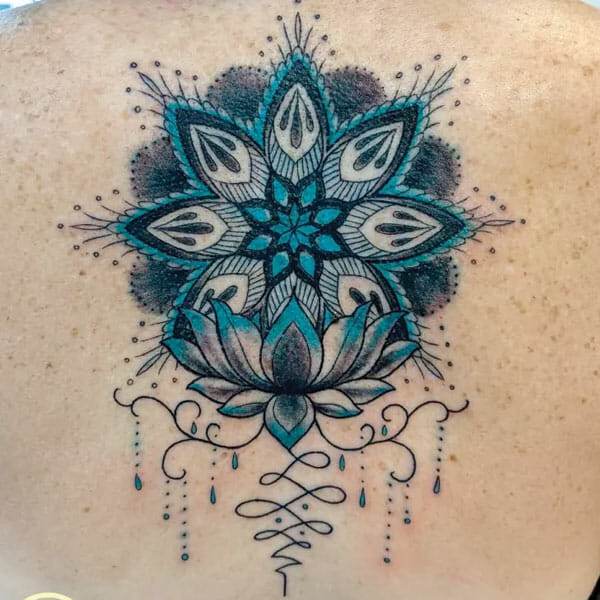
Designing a geometric tattoo is a collaborative process between the client and the tattoo artist. It starts with a consultation, where the client discusses their design ideas, preferences, and any specific elements they would like to incorporate.
The tattoo artist will then take these ideas and create a custom design that fits the client’s vision. This may involve sketching out different options, experimenting with different shapes and patterns, or incorporating elements of sacred geometry or other symbolic elements.
Once the design is finalized, the tattoo artist will transfer it onto the client’s skin using a stencil. This allows the client to see how the design will look on their body and make any final adjustments before the tattooing process begins.
The Significance of Placement in Geometric Tattoos
The placement of a geometric tattoo can greatly affect its meaning and visual impact. Different parts of the body have different shapes and contours, which can influence how the design is perceived.
For example, a geometric tattoo on the forearm may be more visible and easily seen by others, while a tattoo on the back may be more personal and hidden. The placement of a geometric tattoo can also enhance or complement the design itself. For example, a mandala design may look stunning on the back or chest, where there is more space to showcase its intricate details.
Some popular placement options for geometric tattoos include the forearm, upper arm, back, chest, and thigh. Ultimately, the choice of placement is a personal one and should be based on the individual’s preferences and the design itself.
The Meaning and Symbolism Behind Geometric Tattoo Designs
Geometric tattoo designs are rich in symbolism and meaning. Different shapes and patterns can convey different messages and evoke different emotions.
For example, triangles are often associated with strength, stability, and balance. They can also represent the elements of fire, water, earth, and air. Circles, on the other hand, are often associated with unity, wholeness, and eternity. They can also represent the cycle of life and death or the interconnectedness of all things.
Other common geometric shapes used in tattoos include squares, hexagons, pentagons, and octagons. Each shape has its own unique symbolism and can be used to convey different meanings depending on how they are combined or arranged.
The Connection Between Geometric Tattoos and Spirituality
Geometric tattoos have a deep connection to spirituality and are often used in spiritual practices around the world. The precise angles and intricate patterns of these tattoos are believed to hold spiritual significance and can be used as a tool for meditation and self-reflection.
In many spiritual traditions, geometric patterns are seen as a way to connect with higher realms of consciousness or to tap into universal wisdom. Mandalas, for example, are often used in meditation to help focus the mind and achieve a state of inner peace.
Geometric tattoos can also be used as a form of self-expression and a way to connect with one’s own spirituality. Many individuals choose to get geometric tattoos as a reminder of their spiritual beliefs or as a way to honor a particular deity or spiritual practice.

The Role of Color in Geometric Tattoos
Color plays an important role in geometric tattoos and can greatly enhance their meaning and visual impact. Different colors have different associations and can evoke different emotions.
For example, red is often associated with passion, energy, and strength, while blue is associated with calmness, tranquility, and spirituality. Yellow is often associated with happiness, optimism, and creativity, while green is associated with growth, renewal, and nature.
When choosing colors for a geometric tattoo, it is important to consider the overall design and the emotions or feelings you want to evoke. Some individuals may choose to stick with a black and white design for a more minimalist look, while others may opt for vibrant colors to make their tattoo stand out.
Geometric tattoos have become increasingly popular in Houston’s Medical Center Area, attracting a diverse population of doctors, nurses, and medical professionals. These tattoos resonate with the precision and attention to detail that is valued in the medical field and allow individuals to express their individuality and connect with their heritage.
The history and significance of geometric tattoos are vast and varied. They have been used by ancient civilizations as symbols of protection, spirituality, and identity. Different shapes and patterns can convey different meanings, such as strength, balance, unity, or protection.
Choosing the right tattoo artist is crucial when getting a geometric tattoo. These tattoos require precision and attention to detail, and not all tattoo artists have the skill and experience to execute them properly. It is important to do your research and find a reputable tattoo artist who specializes in geometric tattoos.
The process of designing a geometric tattoo is a collaborative one between the client and the tattoo artist. It starts with a consultation where the client discusses their design ideas and preferences. The tattoo artist will then create a custom design that fits the client’s vision.
The placement of a geometric tattoo can greatly affect its meaning and visual impact. Different parts of the body have different shapes and contours, which can influence how the design is perceived. Some popular placement options for geometric tattoos include the forearm, upper arm, back, chest, and thigh.
Geometric tattoos are rich in symbolism and meaning. Different shapes and patterns can convey different messages and evoke different emotions. They are often used in spiritual practices as a way to connect with higher realms of consciousness or to tap into universal wisdom.
Color plays an important role in geometric tattoos and can greatly enhance their meaning and visual impact. Different colors have different associations and can evoke different emotions. When choosing colors for a geometric tattoo, it is important to consider the overall design and the emotions or feelings you want to evoke.
In conclusion, geometric tattoos have found a special place in Houston’s Medical Center Area due to their clean lines, intricate patterns, and cultural significance. These tattoos allow individuals to express their individuality, connect with their heritage, and tap into their spirituality. Whether it’s a minimalist design or an intricate mandala, geometric tattoos continue to captivate and inspire individuals in this vibrant community.


